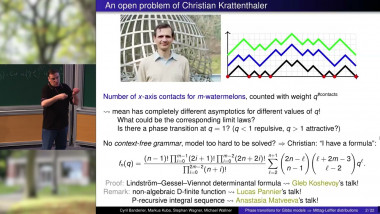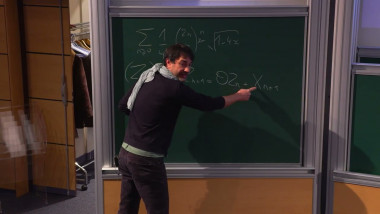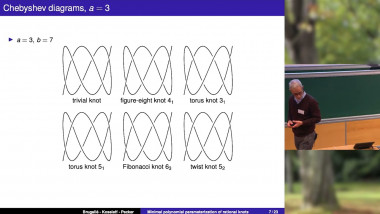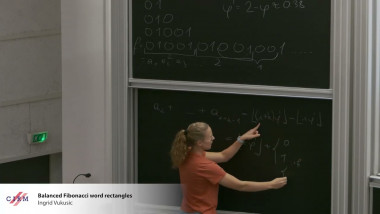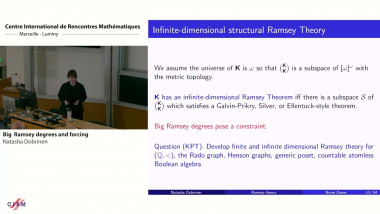Appears in collection : 2014 - T1 - WS1 - Asymptotic properties of groups
Sheaf theory and (co)homology, in the generality developed by Grothendieck et al. , seems to hold great promise for applications in discrete mathematics. We shall describe sheaves on graphs and their applications to (1) solving the Hanna Neumann Conjecture, (2) the girth of graphs, and (3) understanding a generalization of the usual notion of linear independence. It is not a priori clear that sheaf theory should have any bearing on the above applications. A fundamental tool is what we call the "maximum excess" of a sheaf; this can be defined quite simply (as the maximum negative Euler characteristic occurring over all subsheaves of a sheaf), without any (co)homology theory. It is probably fundamental because it is essentially an L^2 Betti number of the sheaf. In particular, Warren Dicks has given much shoter version of application (1) using maximum excess alone, strengthening and simplifying our methods using skew group rings. This talk assumes only basic linear algebra and graph theory. Part of the material is joint with Alice Izsak and Lior Silberman.
